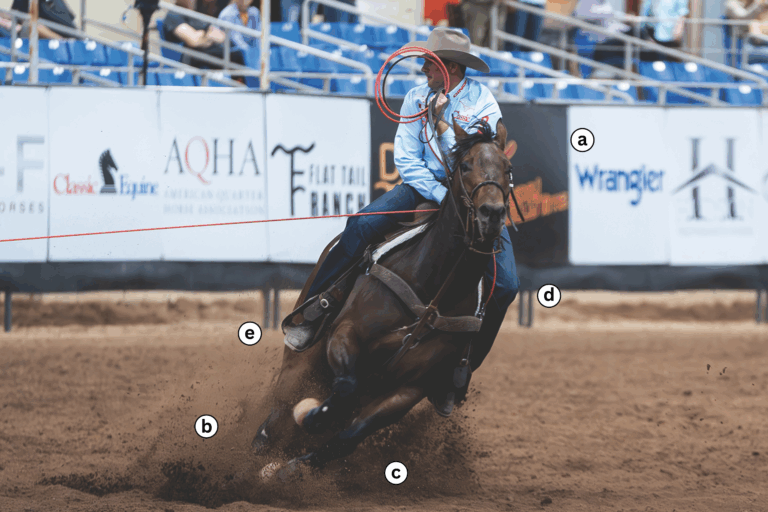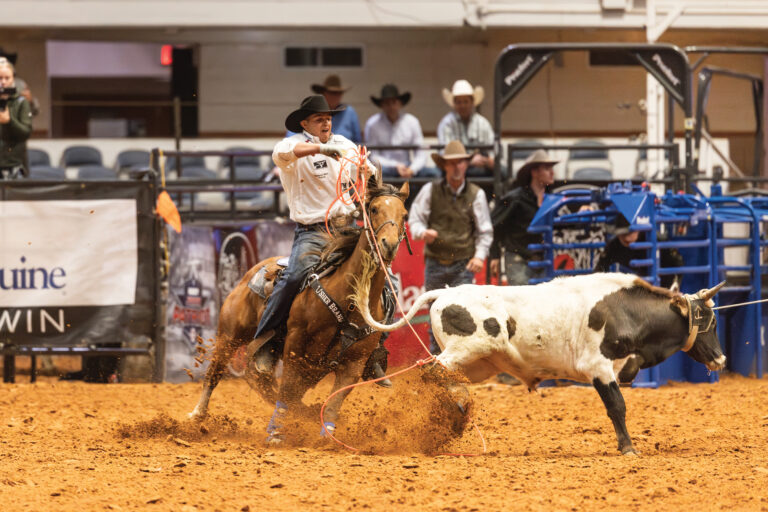The landscape is always changing in every sport. That’s just life, and sports are no exception. I was reading an article about some of the lesser-known ropers in the generation before me the other day—guys like Don Beasley and Gary Mouw. They were local heelers who I got to see a lot as a little kid growing up in Southern California. The big names, like Leo and Jerold (Camarillo) and Jim Rodriguez, were heroes to a lot of us. But that whole era of team roping was great. And it’s amazing to see how far it’s come since they changed the game.
During their day, dally team roping started to be perfected from a “go catch all your steers around two horns and two feet” mentality, and the emphasis was on big averages. The biggest ropings at that time were the 10-head averages in Oakdale and Riverside, and the eight-steer average in Chowchilla. Dally team roping all started in California, and went from west to east. But back then, it was all about catching and consistency.
In that era in the 1960s and ’70s when I was a kid, the catching part was really perfected by some absolutely great ropers. But there was change on the horizon. My generation was inspired by that one before us. We aspired to live our dream of being like those guys, and as our careers went on, roping got even more perfected and faster.
Roping exploded for my generation with the USTRC, the number system, the NFR (National Finals Rodeo) moving to Vegas (in 1985) and the addition of big ropings that paid big money, like the George Strait, BFI, Wildfire, US Finals and, eventually, the World Series of Team Roping. The whole landscape of team roping was changing right before our eyes, and we lived it.
The team roping explosion resulted in so many more people roping, and roping better. Everything changed. Jake (Barnes) and I had our success during that roping renaissance, and our generation in the 1980s and ’90s was kind of a golden era in rodeo that included some pretty spectacular people.
Then the generation behind us was inspired by us, and Speed (Williams) and Rich (Skelton) took up the mantle in their era. The landscape changed even more, and team roping got even faster. Guys like Speed and Rich then inspired today’s generation.
I watched all the performances at Fort Worth this year, and it’s just absolutely remarkable how the headers can hit the barrier, throw their whole rope and catch over and over again. The steers can’t get away from them. Speed inspired the reach shot, and now guys like (Kaleb) Driggers, TWade (Tyler Wade) and (Dustin) Egusquiza are standouts of that style, with another 10 to 15 guys who also can throw three or four coils and dally at the knot.
In my generation, we had the blond bomber, Doyle Gellerman, who I saw do some pretty miraculous things reaching. Before that, the guy who bled over into our generation was HP (Evetts), who was an awesome reacher.
We’re now watching some pretty amazing stuff, and are wondering how much faster it can possibly get. I’ve gotten to see the generation before me, my generation, Speed and Rich’s generation and now this one. Wow. Team roping just keeps getting turned up to another level.
The heelers today are good horsemen riding great horses, and every one of them can get around to the right spot, which isn’t easy to do behind a three-coil bomb drop. To get around the end of it and make it look like a layup takes a lot of work, and has been years in the making.
What drives progress from one generation to the next is inspiration. For me, that was the guys in the generation before me. I so respect and miss that era of ropers. I got to witness some great roping by some really cool people who were the pioneers of the roping and rodeo lifestyle, back when it wasn’t very lucrative. Our dollars went farther back then, but they didn’t even have team roping at a lot of rodeos at that time.
Roping for a living has never been the biggest money maker. But that same cowboy-adventure lifestyle and freedom that inspired me continues to inspire these guys today. When you can’t get enough of it, you work harder. There was a time when there were maybe 10 elite ropers. Then there were 30. Then 100. The numbers and that depth of talent is what makes team roping so tough today. Every team has you on the edge of your seat. And that’s the way it’s supposed to be.
—TRJ—











